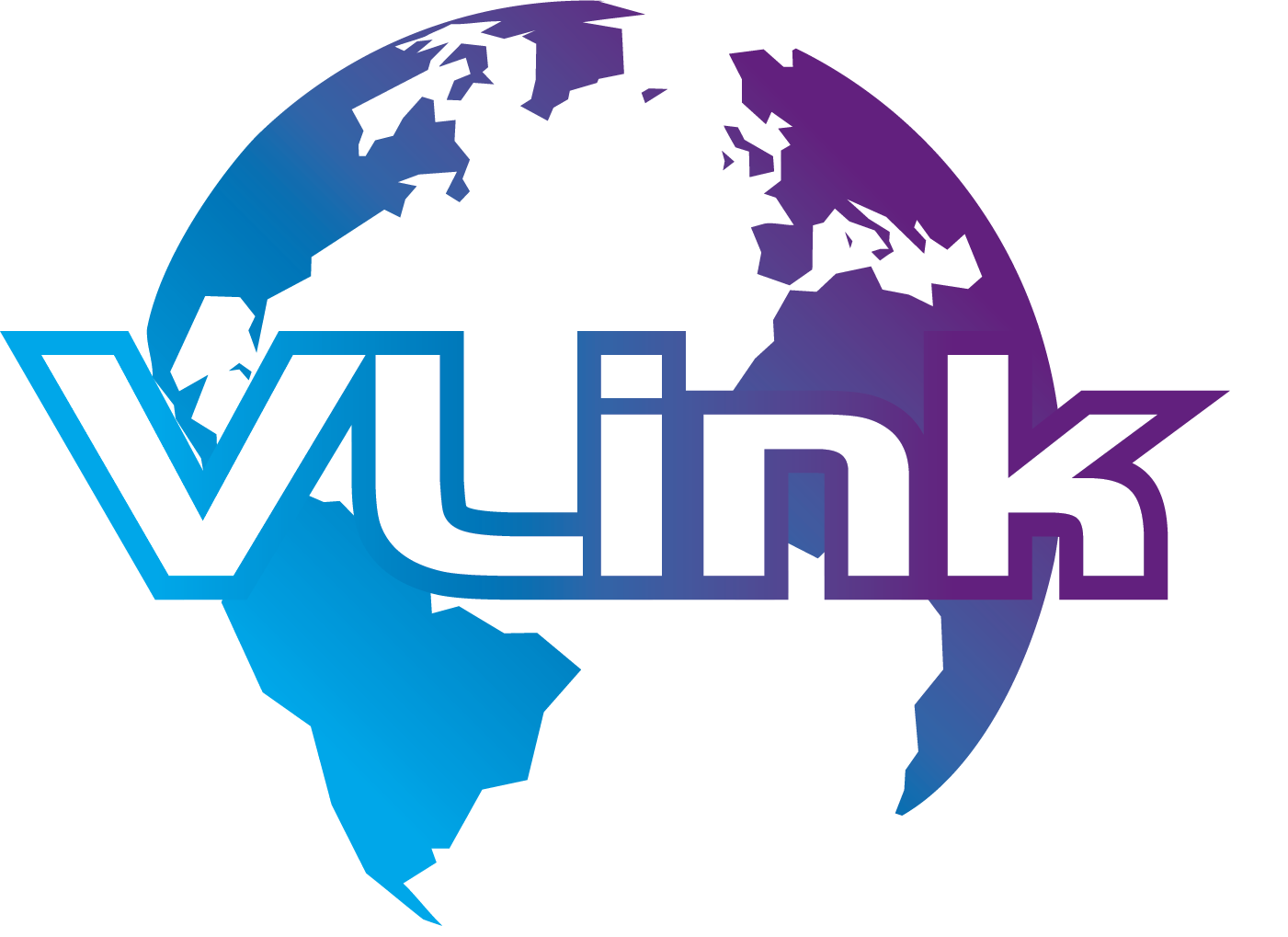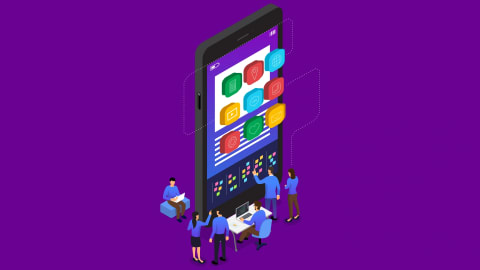The mobile app world is booming like never before. From fitness trackers and finance tools to AI helpers and language-learning companions, mobile apps are central to our lives. And with every new idea, one question stands tall: how much does it cost to develop a mobile app?
This is a question that resonates with startups, established businesses, and entrepreneurs worldwide, as they seek to build their digital presence. In 2025, the estimated cost to develop a mobile app can range from $40,000 for a simple, basic application to well over $400,000 for highly complex, feature-rich platforms, with many commercial apps falling within the $60,000 to $150,000 bracket.

This wide range reflects the diverse nature of mobile app projects, from minimal viable products (MVPs) designed for quick market entry to enterprise-level solutions that demand extensive features and robust infrastructure.
The Apple App Store remains a dominant platform, with recent data indicating that app ecosystem billings and sales reached approximately $1.3 trillion in 2024, underscoring its significant economic impact globally. These steady mobile app development market stats and trends highlight why businesses continue to invest heavily in custom app development. Understanding these financial benchmarks and evolving market dynamics is crucial for anyone embarking on an app development journey.
So, what is the ideal cost of a successful mobile app development service? This blog provides a comprehensive, data-driven, and expert perspective on the realities of app development costs for 2025. We'll demystify the figures, dissect the contributing factors, and illuminate the often-overlooked expenses that can impact your budget.
Why Understanding Mobile App Development Costs Matters
Budget uncertainties are among the leading reasons app projects stall or fail to launch. Accurately predicting the cost to develop a mobile app enables:
- Strategic planning: Laying out a clear financial roadmap from conception to launch and beyond.
- Resource allocation: Wisely distributing capital across various development phases and team members.
- Informed negotiations with vendors: Knowing how to challenge quotes and secure the best value for your investment.
- Maximizing ROI and scalability: Ensuring your initial expenditure sets the stage for future growth and profitability.
Knowing the cost breakdown for developing a mobile app ensures there are no surprises along the way — and that your capital delivers real value. It’s not just about the initial outlay, but also about understanding the long-term financial implications.
Thus, it’s evident that mobile app demand is skyrocketing, and having one will significantly impact your startup. The app development cost dramatically relies on several factors. Let’s examine them in detail.
Top Factors Influencing Mobile App Development Cost
Several variables determine your final budget when considering the cost of developing a mobile app. Let’s break down the most influential elements, helping you grasp the nuances of the cost breakdown to create a mobile app.
1. App Complexity & Features
The more intricate and feature-rich your application, the higher the cost to develop mobile app. This is the most significant determinant.
- Simple apps: These typically include core features like user registration, profiles, basic dashboards, and static content. Think of a simple calculator, a basic informational app, or a to-do list. The development time is shorter, usually 2-3 months.
- Medium complexity apps: These integrate custom UI, user engagement features (e.g., push notifications, chat), third-party APIs (e.g., social media logins, payment gateways), and potentially a basic backend. Examples include fitness trackers, weather apps with detailed forecasts, or simple e-commerce platforms. Development can span 3-9 months.
- Complex apps: These involve advanced technologies such as Artificial Intelligence (AI) and Machine Learning (ML), as well as Augmented Reality (AR) or Virtual Reality (VR), intricate custom backends, robust security protocols, and high scalability requirements. Think of on-demand services, advanced social media platforms, or enterprise-level solutions. These projects often take more than 10 months to complete.
Mobile app complexity directly correlates with development timelines and costs, shaped by factors such as the number of features, user base size, update frequency, and integration complexity. Here’s how complexity impacts timelines:
| App Complexity | Typical Features | Average Timeline | Estimated Cost Range |
| Simple Apps | Basic features (login, static content), few users | 2-3 months | $20,000 - 60,000 |
| Mid-Level Apps | Custom UI, backend integration, moderate user loads | 4-9 months | $50,000 - 200,000 |
| Complex Apps | AI/ML, AR/VR, IoT integration, high scalability | 9-12+ months | $80,000 - 350,000+ |
Factors that increase complexity and time include:
- Volume and intricacy of features (e.g., real-time messaging, payments)
- Number of target users and concurrent sessions
- Integration with third-party services and APIs
- Level of security and compliance needs
- Planned update frequency and continuous feature expansions
This breakdown helps project realistic timelines aligned with app functionality and user expectations.
NOTE: Features and functionality are essential aspects of the mobile app development checklist. It includes choosing backend infrastructure, content management systems, tech stacks, and third-party integration services. These components can add to or reduce the overall development costs. Additionally, various customs or extra features can affect app development costs.
Now, let's explore the average app development cost and the time required to build basic & complex features.
| Features | Functionalities | Approximate Time | Average Costs |
| User Login | Login with social media Login with email address Forgot password option Log out option | 30-42 Hours | USD $500 – $1,000 |
| Profile Completion | Add basic info Add photo Set region | 30-40 hours | USD $900-$1,000
|
| Messaging | Online/offline status Typing status Send media files and documents Read/sent status | 170-180 Hours | USD $3,000-$5,000
|
| Push Notifications | Push notifications and reminders for users | 25-32 Hours
| USD $1,000 – $1,200 |
| Basic Admin Panel | See the list of users Delete/block user Create user Edit user | 66-90 Hours | USD $3,500-$4,000
|
Advanced Features Integration: Cost Breakdown
| Advanced Features | Functionality | Approximate Time | Average Costs |
| Payments | Transaction history Check balance Add debit/credit card Payment gateways | 60-78 Hours | USD $2,500-$3,000 |
| Apps | Detect the user’s locatio Set the pickup and destination points | 100-120 Hours | USD $3,000-$4,000 |
| Calls | Audio call List of contacts Video calls | 300-400 Hours | USD $14,000-$15,000 |
Several factors can vary depending on the category, including the number of users, features, functionalities, and security criteria. This can ultimately result in varying prices for building a mobile app.
Let’s take a look at the top categories of apps, including their average development costs and timelines.
| App Type | Estimate Costs | Development Time |
| Startup App | USD $40,000-$400,000 | 1,600 Hours |
| Game App | USD $60,000-$250,000 | 1,600 Hours |
| Retail App | USD $50,000-$150,000 | 1,200 Hours |
| Augmented Reality App | USD $100,000-$250,000 | 1,600 Hours |
| eCommerce App | USD $60,000-$250,000 | 1,600 Hours |
| Social Media App | USD $50,000-$300,000 | 1,200 Hours |
| Business App | USD $50,000-$200,000 | 1,200 Hours |
| Learning App | USD $60,000-$225,000 | 900 Hours |
| Video Streaming App | USD $80,000-$300,000 | 1,600 Hours |
| Restaurant App | USD $40,000-$150,000 | 900 Hours |
| Shopify App | USD $30,000-$180,000 | 900 Hours |
| Food Delivery App | USD $40,000-$150,000 | 900 Hours |
| Healthcare App | USD $55,000-$300,000 | 1,200 Hours |
2. Platform Choice: iOS, Android, Hybrid & Cross-Platform
The platforms you target significantly impact your costs. Understanding the pros and cons of each is crucial for optimizing the cost of developing a mobile app.
| Platform | Average Cost Range |
| Android | $50,000–$500,000 |
| iOS | $75,000–$500,000 |
| Hybrid | $10,000–$150,000 |
| Cross-Platform | $25,000–$60,000 |
| Web App | $15,000–$50,000 |
- Native (iOS/Android): Developing separate applications for iOS (Swift/Objective-C) and Android (Kotlin/Java) offers the best performance, user experience, and access to device-specific features. However, it requires two separate codebases, making it the most expensive option. The higher cost of developing mobile apps for native solutions is justified by superior performance and tailored user experiences.
- Cross-platform (Flutter/React Native): Cross-platform app development frameworks, such as Flutter and React Native, enable developers to write a single codebase that can be deployed on both iOS and Android. This significantly lowers the cost to develop mobile app and speeds up development, making it an excellent choice for MVPs or apps where extreme native performance isn't critical.
- Hybrid: While sometimes used interchangeably with cross-platform, hybrid apps (like those built with Ionic or Cordova) often wrap web technologies in a native container. They are generally the most affordable but may compromise on performance and native feel compared to accurate cross-platform or native solutions.
- Web App (PWA): Progressive Web Apps (PWAs) are essentially websites that behave like native apps, accessible through a browser. They are the most cost-effective to develop as they don't require app store submissions but offer limited device integration.
Cost savings via cross-platform:
Cross-platform development can reduce costs by 40-50% compared to building separate native apps due to a shared codebase.
Technology stack selection implications:
- Some stacks offer lower initial costs but higher long-term maintenance (e.g., older languages or proprietary tools).
- Modern stacks (React Native, Flutter) reduce maintenance complexity but may have platform-specific limitations.
Scalability/performance:
- Enterprise apps with high user loads and strict performance SLAs often justify native development despite higher costs.
- Consider future growth when selecting a stack to avoid costly rewrites.
3. Design and User Experience (UI/UX)
A well-designed app is intuitive, engaging, and crucial for user retention. Investing in design directly contributes to the overall cost to develop mobile app. Expect to invest in:
- Wireframing and prototyping: Creating basic blueprints and interactive mockups to visualize the app's flow and functionality. This helps refine ideas before extensive coding begins.
- High-quality custom UI/UX: Crafting unique UI/UX design visual elements, animations, and user interactions that align with your brand and provide a seamless experience. Generic templates are cheaper but offer less differentiation.
- Usability testing: Gathering feedback from real users to identify pain points and optimize the app for increased engagement and retention. This iterative process is essential for a successful product.
4. Development Team: Size & Location
Mobile app development costs depend on various factors, including team location, structure, and the complexity level of the project. A basic development team usually includes a project manager, skilled software developers, QA engineers, and UI/UX designers. A backend programmer, system administrator, or additional designers may be essential for your extensive project. As project scales increase, development costs will also rise automatically.
Team size typically scales with complexity:
- Simple apps: 3-4 core members (developer, designer, tester, PM)
- Medium complexity: 5-7 members adding backend devs, BA, and specialized testers
- Complex apps: 8-10+ with architects, multiple devs, security experts, data scientists
Some of the engagement models you can choose for your mobile app project. Each type has its advantages and disadvantages, primarily impacting the overall cost, control, and communication of the project.
- In-house team: Offers maximum control and communication but comes with significant overhead (salaries, benefits, office space). This can dramatically increase the cost to develop mobile app.
- Freelancers: Can be cost-effective for smaller projects or specific tasks, but may lack comprehensive project management and dedicated team synergy.
- Outsourcing agencies: Provide a balanced approach, offering diverse expertise and structured project management. Rates vary significantly based on location. US and Canadian developers typically charge premium rates ($120–$150/hr), while Eastern Europe or Asia can offer far more affordable options, impacting the overall average cost to develop a mobile app.
Pro Tips: In-house teams offer control, but they come with higher fixed costs and overhead. And outsourcing provides flexibility and cost savings, but requires strong vendor management.
The expertise and geographical location of your development team significantly influence the average cost of developing a mobile app. Rough development team cost estimation according to different regions:
| Region | Hourly Rate (USD) | Considerations |
| USA (varies intra-US) | $120 - $180 | Highest cost but best alignment with local standards, time zones, and communication. Some areas exhibit cost variance. |
| Australia | $100 - $130 | Higher rates with good timezone overlap for APAC clients. |
| UK | $90 - $120 | Moderate rates, timezone favorable for Europe. |
| Western Europe | $70 - $100 | Quality balance, slightly lower costs than the UK. |
| Eastern Europe | $30 - $60 | Cost-effective with strong technical skills; possible timezone differences and language considerations. |
| India | $20 - $35 | Highly affordable, but project management is key to mitigating timezone and communication issues. |
| Indonesia | $15 - $30 | Emerging markets with competitive rates and growing skillsets. |
Additional factors to consider:
- Time zone compatibility affects real-time communication.
- Language fluency and cultural fit impact project smoothness.
- Quality standards and experience levels vary within and across regions.
- Intra-US cost variations reflect city vs. rural talent pools and demand.
This context helps decision-makers weigh cost savings against project risks and management overhead.
5. Maintenance and Post-Launch Support
App development doesn't end at launch. Ongoing maintenance is a critical, often underestimated, aspect of the cost to develop a mobile app.
- Annual maintenance: Typically ranges from 15% to 25% of the initial development cost. This covers essential upkeep.
- Updates, bug fixes, and compliance: As new devices, operating system versions, and security threats emerge, your app will require continuous updates to ensure compatibility and functionality.
- Server and infrastructure costs: These scale with user growth and data usage.
These ongoing costs are vital to ensure your app remains relevant, secure, and high-performing, directly affecting the long-term cost of developing a mobile app. Ongoing maintenance is a necessary, often underestimated part of the total cost of ownership. Typical activities include:
- Bug fixes and performance optimizations: Regular correction of issues and system tuning.
- Security updates: Patching vulnerabilities to safeguard user data and comply with regulations.
- API and third-party service updates: Ensuring external integrations remain functional and compatible.
- Server and cloud infrastructure management: Managing hosting services, load balancing, and data storage scalability.
- Feature updates and compliance adjustments: Adding new functionality, updating for OS changes, and meeting legal requirements.
Estimated annual maintenance costs:
- Maintenance typically costs 15-25% of the initial development budget per year.
- For a $100,000 app, expect $15,000-$25,000 annually for upkeep.
Breakdown example:
- Bug fixes and security: 40-50% of maintenance budget
- New OS compliance and feature updates: 30-40%
- Infrastructure and hosting: 20-30%
Understanding these costs helps plan long-term budgets for app sustainability and performance.
Cost Breakdown to Develop Mobile App: A Phase-by-Phase Look
Understanding the cost breakdown for developing a mobile app by phase provides clarity on where your investment is allocated. Each development stage has its own cost drivers and timelines.
Cost Breakdown: Mobile App Development Phases
| Development Stage | Deliverables & Activities | % of Total Cost Range | Typical Duration |
| Discovery | Market research, requirement gathering, prototyping | 10-15% | 2-4 weeks |
| UI/UX Design | Wireframes, prototypes, user testing | 15-20% | 3-6 weeks |
| Development | Coding front-end and back-end, API integration | 40-50% | 2-9 months |
| Testing | QA testing, bug fixing, performance optimization | 15-20% | Ongoing during dev |
| Deployment | Launch on app stores, environment setup, certifications | 5-10% | 1-3 weeks |
Key activities by stage:
- Discovery: Clarifies scope, user needs, and technical feasibility.
- UI/UX Design: Creates user flows, visual design, and usability validation.
- Development: Builds app functionalities, backend, and integrates services.
- Testing: Ensures stability, security, and performance through iterative QA.
- Deployment: Submission to app stores, compliance checks, and release management.
Each of these phases is crucial and contributes to the overall cost to develop mobile app. Skipping or cutting corners at any stage can lead to costly rework or a subpar product in the long run. Given the current market trends and factors in mobile app development, here's an overall estimated cost range for Mobile App Development:
- Minimum (Very Simple App): $10,000 - $60,000
- Average (Medium Complexity App): $60,000 - $180,000
- High (Complex/Enterprise-Grade App): $180,000 - $500,000+
Note: These are estimated ranges. The actual cost for your specific app will depend heavily on a detailed scope of work, the chosen development partner, and the particular technologies employed. Always get a detailed quote after discussing your requirements with potential development teams.
To provide a clear snapshot for 2025, here's a general breakdown based on current industry research and market rates:
| App Complexity | Average Cost (USD) | Development Time |
| Basic/Starter App | $40,000 – $100,000 | 3–6 months |
| Moderate App | $100,000 – $200,000 | 6–9 months |
| Advanced/Complex App | $200,000 – $400,000+ | 9–12 months |
| Enterprise-Grade App | $400,000 – $1,000,000+ | 12–18 months |
These figures are a testament to the dynamic nature of the app development industry. Factors such as evolving technologies (AI, machine learning, and AR/VR integrations), stricter security requirements, and increased user demands for seamless experiences all contribute to the updated pricing structures in 2025.
Remember, this is an estimate. Unforeseen challenges, scope creep, or changes in requirements can impact the final cost of building a mobile app. A transparent development partner will provide detailed breakdowns and regularly communicate progress, as well as any potential cost implications.
Hidden Cost of Developing Mobile App: What Most Overlook
Budgeting for development isn’t enough — here are additional, often-overlooked expenses that may arise, significantly impacting the total cost of developing a mobile app.
- Third-Party Integrations & APIs: Most modern apps rely on external services for functionalities like payment processing, location services, social media sharing, or analytics. Licensing or usage fees for these APIs (e.g., Google Maps API, Stripe, Twilio) can add up.
- Backend Infrastructure/Cloud Services: Your app needs a backend to store data, manage users, and handle complex logic. Services like AWS, Azure, or Google Cloud incur costs based on usage, storage, and scaling. These can surge significantly as your user base grows.
App Store Fees & Marketing:
- Developer accounts: Apple Developer Program ($99/year) and Google Play Console (a one-time fee of $25).
- Marketing and user acquisition: Launching an app alone doesn't guarantee users. Budget for app store optimization (ASO), paid advertising, social media campaigns, and public relations to gain visibility and drive downloads. This is a substantial hidden cost of developing a mobile app, but it is essential for growth.
- Compliance & Security: For apps handling sensitive data (e.g., healthcare, financial services), ensuring compliance with regulations such as HIPAA, GDPR, SOC2, or PCI DSS may require specialized legal consultation, security audits, and technical implementations. This can significantly increase the cost of developing a mobile app.
- Content Creation: If your app relies on unique content (text, images, videos), the cost of creating or curating this content needs to be factored in.
- Project Management & Communication Tools: While often integrated into an agency's overhead, if you're managing a disparate team, licenses for tools like Jira, Slack, or Trello can add to expenses.
These often-overlooked elements can significantly inflate the actual cost of developing a mobile app.
Cost Reduction Tips: How To Optimize Mobile App Development Budget
While the figures above might seem daunting, there are innovative strategies to optimize your cost to develop a mobile app without compromising on quality:

- Choose MVP First: Prioritize core features that deliver the most value to your target users and release a Minimum Viable Product quickly. This allows you to test your concept, gather user feedback, and iterate based on real-world usage, avoiding costly features that users might not need. This significantly reduces the initial cost of developing a mobile app.
- Consider Cross-Platform or Hybrid Development: If your app doesn't require highly specialized native features or extreme performance, using frameworks like Flutter or React Native can significantly reduce development time and effort, as you only need one codebase for both iOS and Android. This directly impacts the average cost to develop a mobile app.
- Strategic Outsourcing: While local talent in the US and Canada can be excellent, exploring reputable development teams in regions such as Eastern Europe, Latin America, or Asia can offer significant cost savings due to lower hourly rates. However, thorough vetting for quality, communication, and experience is crucial. This is a key factor in managing the cost to develop a mobile app.
- Tightly Defined Requirements: Prevent "scope creep" by having a clear, detailed, and well-documented set of requirements in place before development begins. Ambiguity leads to rework, delays, and increased costs. A thorough discovery phase can identify potential issues early, helping to predict the cost breakdown to develop a mobile app more accurately.
- Plan for Ongoing Maintenance: Budgeting yearly for fixes, upgrades, and compatibility ensures your app remains functional and competitive, preventing larger, more expensive overhauls down the line. A proactive approach to maintenance can mitigate future hidden costs associated with developing a mobile app.
- Leverage Open-Source Tools and Libraries: Where possible, utilize open-source frameworks, libraries, and tools to reduce development time and licensing fees, fostering community collaboration and access to a wealth of pre-built solutions.
- Focus on Essential UI/UX: While custom UI/UX design services are vital for your company, avoid overly complex animations or unnecessary visual flourishes in the initial stages, as these can add to design time and cost. Simplicity often translates to a better user experience and a lower price to develop a mobile app.
Options to Choose for Your Mobile App Development
Hiring an experienced development team offers several benefits, including lower costs and higher quality. Select experts wisely if you want the best team for your buck. The total mobile app development price heavily depends on who you select for app development.
There are multiple choices such as:-
- App development company
- Local team
- In-house development team
- A freelance developer
Option #1 - Hire a Local Agency
You can always select an expert mid-size local app development company that provides a wide range of services, including SEO optimization. Local companies will incur higher costs for developing Android and iOS apps. Depending on the country, the development & design team's per-hour rate can range between $150 and $250.
Option#2 - Build an In-House Team
The in-house team works entirely as a part of your company, receives fixed monthly payments, and gets daily instructions from your management. The cost of an in-house team varies with the startup's location and the developer's expertise.
For startups based in the US, the price for
- Full-stack developer = $180,000/year
- Designer = $160,000/year
- Android & iOS mobile app programmer = $ 170,000/year
Option# 3 - Hire Freelancers
If you need a team for a small project, you can work with freelancers. However, you must dedicate a significant amount of time to communication and project management. With a freelancer, you can follow two ways:
- Hire them on a contract basis
- Hire them on an hourly basis
Plus, you can find freelancers from several platforms, such as Upwork, Fiverr, etc.
The freelancer's average hourly costs depend on the country you are hiring from.
- US: $50 per hour
- Asia: $15 to $25/hour
- Ukraine: $25/hour
- Latin America: $20/hour
Option #4: Outsource App Development
Outsourcing a mobile app development agency allows you to turn your app idea into reality and manage the overall architecture. It will enable you to focus on your business needs while the expert team handles your technical requirements. Development costs differ from country to country.
For example:
- Developers' costs in the USA are 2x-3x higher than hiring developers in Ukraine.
- The cost of outsourcing mobile app development to an offshore agency varies from USD 30,000 to USD 500,000.
Suppose you hire a decent outsourcing agency to revitalize your digital presence. In that case, VLink is the right choice for your mobile app development for business, whether you have a startup or an established one.
10 Most Popular Global Apps and Their Development Cost
Ever wondered about the financial muscle behind the apps that dominate our daily lives? From social media giants to cutting-edge AI tools, understanding the development and ongoing costs of these global leaders can provide crucial insights for your app planning and budgeting.
This breakdown examines 10 top-tier applications, highlighting their initial development estimates and the substantial investments required to maintain their market position by 2025.

App Cost Deep Dive: 10 Global Leaders
Uber
- Initial MVP Cost: $150,000 – $200,000
- Core Innovations: Real-time GPS tracking, dynamic fare calculation, seamless multi-platform user experience (iOS, Android, Web).
- 2025 Complexity Focus: Navigating diverse global regulations, integrating advanced driverless vehicle technology, and scaling logistics for new services contribute to high ongoing operational costs.
Instagram
- Initial Development Cost: $100,000 – $300,000
- Evolution of Features: Pioneering photo filters, introducing ephemeral "Stories," enabling short-form "Reels," and integrating robust e-commerce capabilities.
- 2025 AI Investment: An estimated $ 2 million+ per month is now allocated to sophisticated AI systems for content moderation, combating misinformation, and personalizing user feeds.
WhatsApp
- Initial Development Cost: $250,000 – $350,000
- Key Security & Sync: End-to-end encryption for privacy, seamless cross-platform message synchronization across devices.
- 2025 Scale: This messaging behemoth processes an astounding 140 billion messages daily, demanding immense infrastructure and continuous optimization.
Tinder
- Initial MVP Cost: $50,000 – $150,000
- Signature Mechanics: An App like Tinder introduced intuitive swipe-based matching, sophisticated boost algorithm for user visibility.
- Fun Fact (2025): Match Group, Tinder's parent company, reportedly invests over $400 million annually in AI-driven matching algorithms to enhance user connections.
TikTok
- Initial Development Cost: $500,000+
- Algorithmic Edge: Powerful AI recommendation engine, innovative green screen, and effects capabilities.
- 2025 Cloud AI Costs: Ongoing cloud infrastructure and AI model training costs are substantial, exceeding $10 million per month to sustain its highly personalized content delivery.
ChatGPT Mobile App
- Initial App-Only Cost: $800,000 – $1.5 million
- Interactive Features: Advanced voice interactions, multimodal query processing (text, image, audio inputs).
- Shocking Stat (2025): OpenAI's underlying API costs for services like ChatGPT are reportedly surpassing $700,000 per day, highlighting the immense computational power required.
Netflix
- Initial App Development Cost: $300,000 – $500,000
- User-Centric Design: Robust offline viewing capabilities, highly personalized user profiles, and recommendations.
- 2025 Infrastructure Spend: Netflix allocates over $1.3 billion annually to its Content Delivery Network (CDN) infrastructure, ensuring high-quality, low-latency streaming globally.
Spotify
- Initial Development Cost: $250,000 – $400,000
- Personalized Discovery: Signature "Discover Weekly" playlists, advanced AI DJ features for curated audio experiences.
- Music to Your Ears (2025): A significant 60% of all music streams on Spotify are now driven by AI-generated playlists and recommendations, highlighting the platform's reliance on intelligent curation.
Zoom
- Initial Development Cost: $200,000 – $350,000
- Core Functionality: Dynamic virtual backgrounds, strong end-to-end encryption for secure communication.
- Post-COVID Investment (2025): Zoom continues to invest heavily in security, spending over $1 million monthly on upgrades and enhancements to safeguard its vast user base.
Canva
- Initial Development Cost: $180,000 – $300,000
- Intuitive Design Power: User-friendly drag-and-drop interface, AI-integrated design tools for quick creation.
- 2025 AI Adoption: An impressive 70% of Canva users now actively utilize its "Magic Design AI" features, demonstrating the widespread embrace of AI in creative workflows.
3 Crucial Takeaways for Your App Development Journey:
- The "AI Tax" is Real: Apps deeply integrated with AI functionalities (e.g., TikTok, ChatGPT) incur significantly higher ongoing operational costs; often 5-10 times more than traditional applications.
- Strategic Geo-Arbitrage: Outsourcing development to regions like Ukraine or India can yield substantial cost savings, potentially reducing your initial budget by 40-60% compared to growth in the high-cost areas like Silicon Valley.
- Don't Forget the Hidden Expenses: Beyond initial development, budget an additional 20-30% annually for crucial ongoing costs.
The Future of Mobile App Development: Key Trends
The mobile app landscape is rapidly transforming, driven by innovation and evolving user demands. Here are the core trends shaping its future:
- AI & Machine Learning Dominance: AI and ML will be embedded everywhere, enabling hyper-personalization, predictive insights, and more natural user interactions (voice, chatbots). AI will also streamline development and testing.
- Immersive Experiences: AR & Spatial Computing: Augmented Reality (AR) will become mainstream for daily use (navigation, shopping), while spatial computing (e.g., Apple Vision Pro-like experiences) will blur digital and physical realities, moving beyond just gaming.
- 5G & Edge Computing Unleashed: The widespread adoption of 5G combined with edge computing will bring ultra-low latency and enhanced performance. This will enable real-time processing, power new app categories (e.g., advanced IoT), and reduce reliance on central cloud servers.
- Maturing Cross-Platform Development: Flutter and React Native will continue to offer efficient, near-native performance across platforms. Progressive Web Apps (PWAs) will gain more traction, while low-code/no-code development tools will democratize app creation, thereby accelerating the prototyping process.
- Security & Privacy by Design: Security will be paramount. Apps will adopt zero-trust architectures, utilize decentralized technology (such as blockchain for specific purposes), and offer users granular control over their data. Ethical AI development will also be a key focus.
- Sustainable App Development: A growing emphasis will be placed on energy-efficient coding and optimizing cloud resource usage to reduce environmental impact. Expect more apps designed to promote eco-friendly behaviors.
Agility and adaptability to these technological shifts, combined with a focus on user experience, security, and sustainability, will define success in the future of mobile app development.
Choose VLink Expertise to Build Mobile Apps
When considering the significant investment involved in mobile app development services, partnering with a proven expert like VLink can make all the difference. VLink brings a wealth of experience and a deep understanding of the intricacies of app creation, ensuring your project is handled with precision and strategic foresight.
Our approach focuses on delivering high-quality, scalable, and user-centric mobile applications that align perfectly with your business objectives and budget expectations. Our dedicated team of seasoned professionals excels in all phases of the development lifecycle; from detailed planning and intuitive design to robust development, rigorous quality assurance, and ongoing post-launch support.
With VLink, you gain a partner committed to transparent communication, agile methodologies, and a relentless pursuit of excellence, mitigating potential hidden costs of developing a mobile app and ensuring a smooth, efficient development journey.
Leverage VLink's proven track record to transform your app idea into a successful digital product that truly stands out in the competitive markets.
Conclusion
Building a successful mobile app requires much more than just coding. It's a strategic investment that, when approached with a clear understanding of the financial landscape, can yield significant returns. By understanding every element that impacts how much it costs to develop a mobile app, from initial concept to post-launch maintenance, you’re empowered to budget confidently, make strategic vendor decisions, and launch with a solid foundation for ROI.
Don't let the potential cost to develop a mobile app deter your innovation. Instead, take the time to explore, ask for detailed cost breakdowns to create a mobile app, and prioritize value in alignment with your business goals. By being informed about the hidden costs of developing a mobile app and implementing innovative cost-reduction strategies, you can transform your vision into a successful, high-traffic mobile application that generates leads and resonates deeply with users in your target market.
Ready to take the next step and bring your mobile app vision to life? Contact us today for a tailored consultation and a detailed estimate. Let VLink be your partner in achieving app success with clarity and confidence.










 Shivisha Patel
Shivisha Patel

















